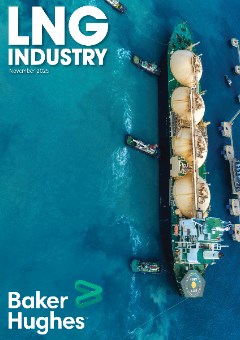Editorial comment
While we’re experiencing colder and darker weather in the UK, many world leaders and government officials will soon be gathering in a warmer part of the world for the United Nations Framework Convention on Climate Change, otherwise known as COP30.
Register for free »
Get started now for absolutely FREE, no credit card required.
This year, the meeting will be held in Belém, Brazil, one of the gateways to the Amazon River. It is here the President of Brazil, Luiz Inácio Lula da Silva, hopes to make good on his statement of ensuring the 30th conference on climate change is the “turnaround COP”.1 All eyes will be on the meetings in South America to see what is decided upon in the hopes that we can move closer to achieving the goals set in the Paris Agreement in 2015, and perhaps take it even further.2
Elsewhere, the International Maritime Organization (IMO) has adjourned the sessions of the Marine Environment Protection Committee (MEPC), which had convened to consider the adoption of draft amendments to MARPOL Annex VI, including the IMO Net-Zero Framework. At the meeting, the IMO made the decision to adjourn discussions on the adoption of the Net-Zero Framework for one year, with talks to resume in 2026.3
Responses to this news have been mixed, but some see this decision as offering more time for companies and other organisations (such as SEA-LNG4) to work with members and continue the development of scientific studies to support the IMO’s work in helping the maritime industry reduce its emissions.
Of course, the industry has long been trying to find ways of counteracting the environmental concerns associated with it. As well as the IMO regulations, there are multiple other ways the entire value chain can target its emissions, both in the marine and onshore LNG industries. The articles in this issue of LNG Industry go on to showcase some of these options. For example, our annual Insulation Q&A provides insight into how insulation can be an underrated and sometimes underutilised method for improving efficiency and reducing emissions.
In addition, I-Tech talks about how barnacle biofouling can decrease a vessel’s Carbon Intensity Index rating and increase greenhouse gas emissions. With many LNG carriers carrying a lifespan of 25 – 30 years, they will be active during the enforcement of many regulations that will clamp down on emissions. As a result, hull coatings are just one method of reducing emissions and fuel costs, as well as minimising the impact of potential carbon taxation systems, as the article explains.
As we start winding down towards the end of the year, the LNG industry shows no signs of slowing down. As always, the team at LNG Industry will be with you for every news update, project and technological development, event, and more. You can pick up a copy of the November issue at the World LNG Summit & Awards, taking place in Istanbul, Türkiye, from 2 – 5 December 2025.
References
1. ‘“COP30 will be our last chance to avoid an irreversible rupture in the climate system,” calls Lula at the final thematic session of the G20 Brasil Leaders’ Summit’, G20 Brasil 2024, (19 November 2024), www.gov.br/g20/en/news/cop30-will-be-our-last-chance-to-avoid-an-irreversible-rupture-in-the-climate-system-calls-lula-at-the-final-thematic-session-of-the-g20-brasil-leaders-summit
2. ‘The Paris Agreement’, United Nations Climate Change, https://unfccc.int/process-and-meetings/the-paris-agreement
3. ‘IMO net-zero shipping talks to resume in 2026’, International Maritime Organization, (17 October 2025), www.imo.org/en/mediacentre/pressbriefings/pages/imo-net-zero-shipping-talks-to-resume-in-2026.aspx
4. ‘SEA-LNG MEPC Statement’, SEA-LNG, (20 October 2025), https://sea-lng.org/2025/10/sea-lng-mepc-statement


